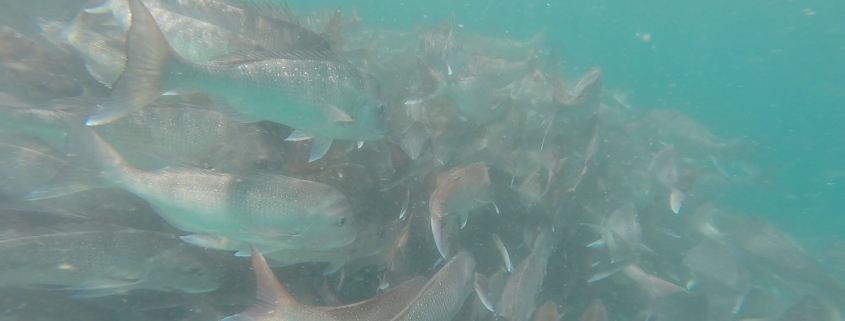Snapper research helping to evaluate hatchery release programs
Researchers are working on non-lethal ways of evaluating the success of programs that release hatchery-reared snapper fingerlings into Cockburn Sound.
The WAMSI Westport Marine Science Program project, led by the Department of Primary Industries and Regional Development, involves analysing photographs of hatchery snapper to ultimately determine any physical differences with wild snapper.
DPIRD’s Dr David Fairclough, who is working on the WAMSI Westport Marine Science Program project, said the release of hatchery – reared juvenile snapper was perceived as a positive way of improving wild stocks but it was not always clear whether the fish thrived or how long they survived.
“Such information is crucial to assess how hatchery-reared fish may contribute to stocks,” Dr Fairclough said.
The project also involves research scientists from Murdoch University and Flinders University.
“For the research, photographs of the hatchery-reared snapper are imported into a computer program that allows 16 physical features on the fish to be assigned and the distances between them measured,” Murdoch University’s Dr James Tweedley said.
The same process will be conducted on juvenile snapper collected from Cockburn Sound but these fish will also be dissected and have their otoliths – a bone in their ear – removed to determine whether they were grown in the hatchery. A non-toxic substance is used to stain the otoliths of live hatchery snapper before their release, allowing them to be identified later in biological samples.
“If significant differences end up being detected then, in future, citizen scientists or recreational fishers could become involved in monitoring released snapper by providing photos of their catches for analysis,” Dr Tweedley said.
The project is also investigating whether snapper from inside Cockburn Sound are genetically different than snapper in the open ocean outside the Sound. In addition, it will test if hatchery-reared juveniles contain the same levels of genetic diversity and are as well adapted as those found in the wild population in Cockburn Sound.
“The role of Cockburn Sound as a spawning and nursery area for snapper is well recognised. However, the level of contribution made by those fish to the population and associated fishery along the lower west coast is not fully understood,” Dr Fairclough said.
“Information from this project will help with future identification of where hatchery-reared fish move to, either in Cockburn Sound or along the west coast,” Dr Fairclough said.
Fish frames donated by fishers to DPIRD as part of their ‘Send Us Your Skeletons’ citizen science project, would give researchers an understanding of where hatchery-reared fish move by removing their otoliths to see if they are stained.

